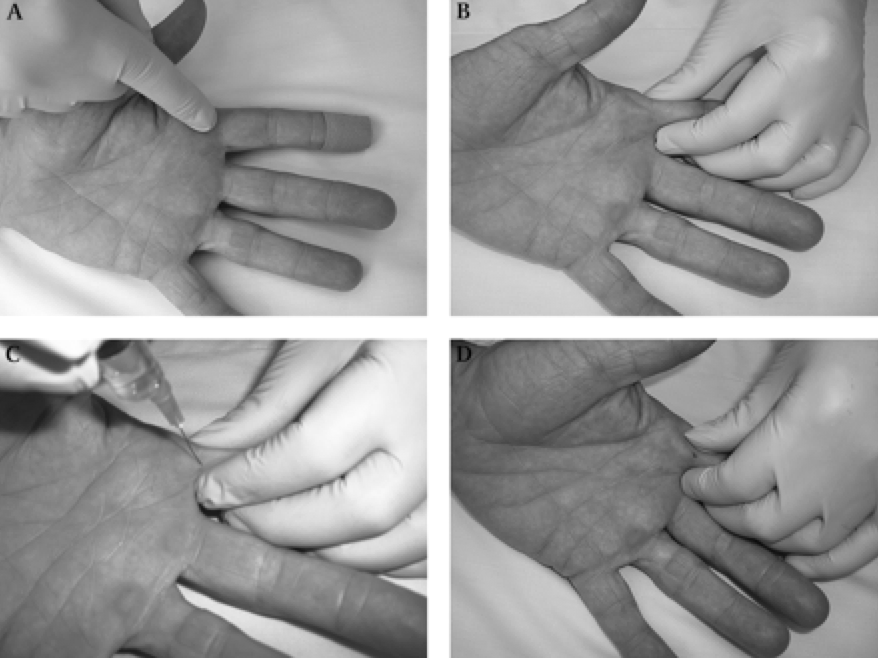Although not a difficult procedure, the traditional approach to a digital nerve block involves two painful injections to the the digital nerves on either side of a finger, and may yield inconsistent results. An alternative, the flexor tendon sheath injection, requires slightly more skill and a slightly more painful injection. But lo, another (not new) approach may yield better results with less effort. A single subcutaneous injection of 2-3cc of lidocaine into the volar aspect of the base of the injured finger (technique below) works as well if not better than the traditional two injection approach according to a (small) 2010 RCT. Try it next time you need to anesthetize a finger.
(A) Landmark. Identify the proximal skin crease on the volar aspect of the injured finger.
(B) After cleaning the skin, use one hand to gently pinch the soft tissues of the finger just distal to the skin crease.
(C) Insert the needle (25G) just beneath the skin at the midpoint of the skin crease. Inject 2–3 millilitres of warmed 0.5% bupivacaine into the soft tissues.
(D) Massage the anaesthetic into the soft tissues.
Read More:
Cannon B, Chan L, Rowlinson JS, Baker M, Clancy M (2010). Digital anaesthesia: one injection or two? Emergency medicine journal: EMJ, 27 (7), 533-6 PMID: 20360491.

